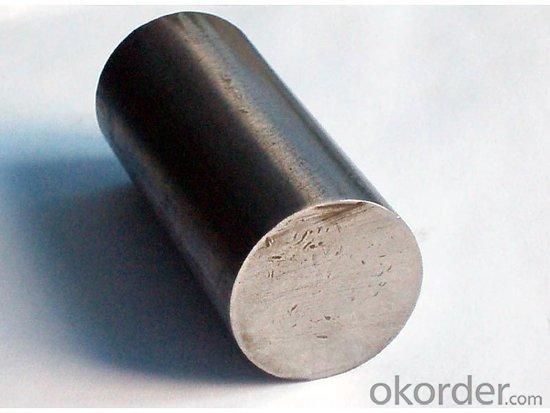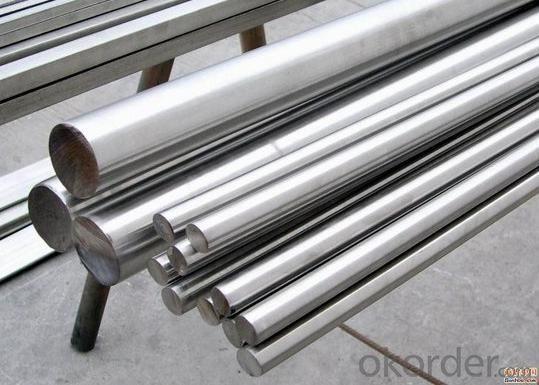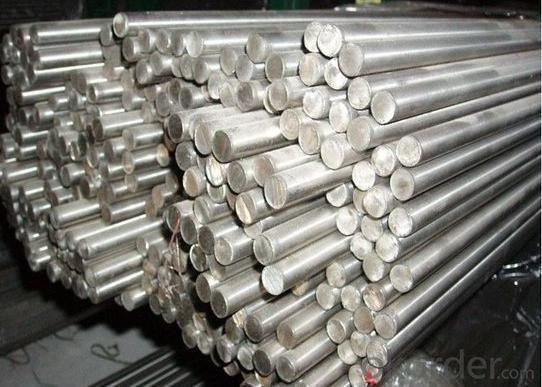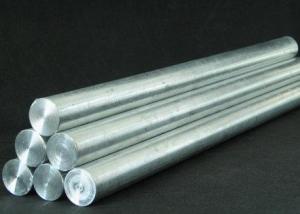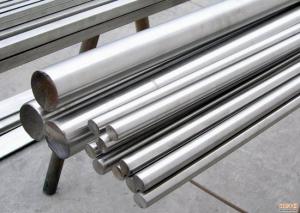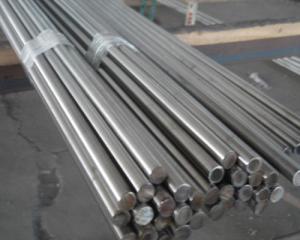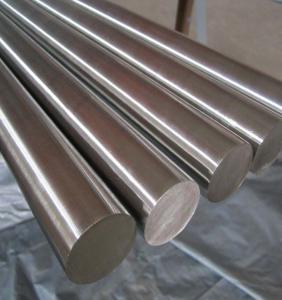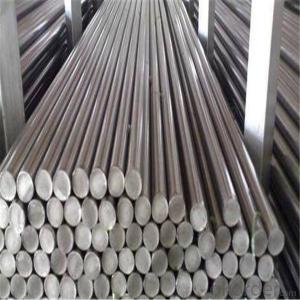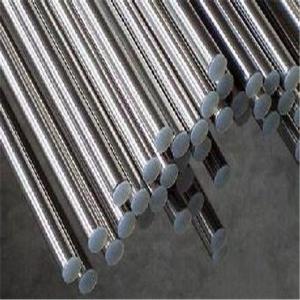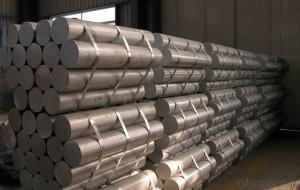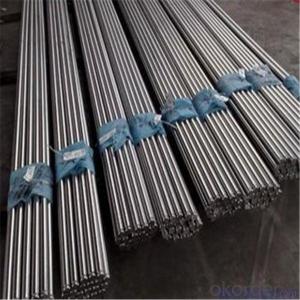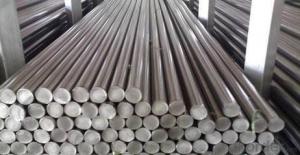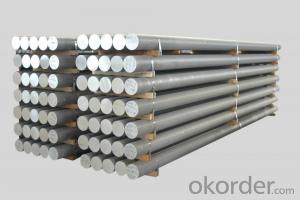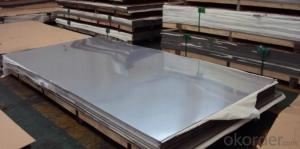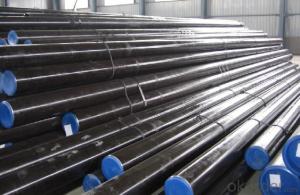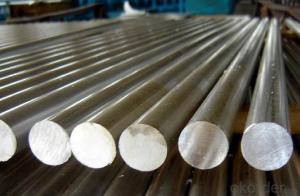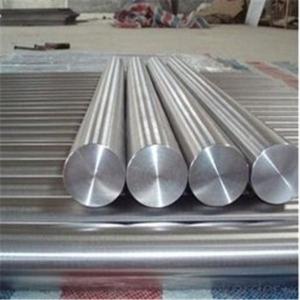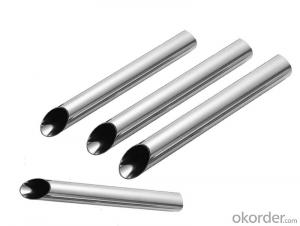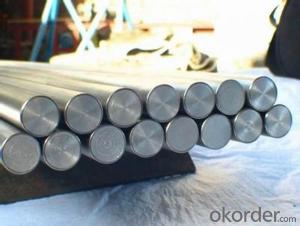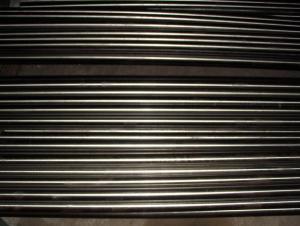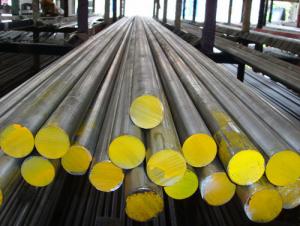304 Stainless Steel Bar
- Loading Port:
- Shanghai Port
- Payment Terms:
- TT or LC
- Min Order Qty:
- 5 Tons m.t.
- Supply Capability:
- 1000 Tons Per Month m.t./month
OKorder Service Pledge
OKorder Financial Service
You Might Also Like
Introduction of 304 Stainless Steel Bar:
Stainless steel is a production which not easy rust, acid resistance and corrosion resistance, so it is widely used in light industry, heavy industry, daily necessities and the decoration industry.my company long-term supply stainless steel porducts including: stainless steel sheet, stainless steel coil and stainless steel tube.
Details of 304 Stainless Steel Bar(Cold Drawing Polished):
*DIA 10mm to 130mm
*FORGE
*DIA 130mm to 300mm
*GB1220,ASTM A 484/484M, EN 10060/ DIN 1013
*DIA 3mm to 60mm
Main operation | Main steel grade | Available size(mm) | Monthly capacity(mt) | Length(mm) | |
OEM | Stainless steel | 40~500 | 1500 | 4000~8000 | |
Hot | 303 303Cu 304/L 310S 316/L 321 416 420 | 12 ~200 | 3000 | 4000~7000 | |
17-4PH WLA510 | 19~110 | 2000 | 4000~7000 | ||
ST Bar | 321 304/L 316/L 310S 17-4PH WLA510 | 19~110 | 2000 | 4000~7000 | |
CD Bar | Round bar | 303 303CU 304/L 316/L 416 420 17-4PH WLA510 | 4.76~100 | 500 | 2500~6500 |
Square bar | 303 303CU 304/L 316/L 416 17-4PH WLA510 | 4.76~75 | 180 | 2500~6500 | |
Hex bar | 303 303CU 304/L 316/L 416 17-4PH WLA510 | 4.76~75 | 180 | 2500~6500 | |
CG Bar | 303 303CU 304/L 316/L 416 420 17-4PH WLA510 | 4.76~100 | 500 | 2500~6500 | |
Features of 304 Stainless Steel Bar:
*Low density
*High specific strength
*High corrosion resistance
*Good thermal stability and plasticity
*It is widely applied for petroleum, chemical, mechanical and electrical, hardware, etc.
Quality assurance of 304 Stainless Steel Bar:
All of the products are detected by ultrasound making sure that no defects inside the products. Besides, chemical composition, mechanical properties and high-powered organization are also strictly controlled, ensuring our clients get the best products.

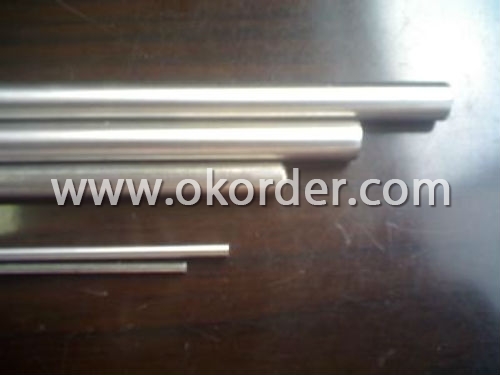
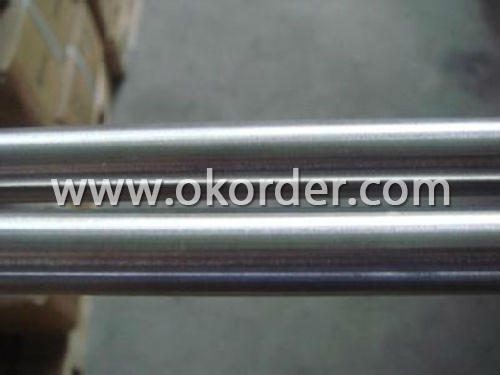
- Q: How do stainless steel bars resist hydrochloric acid?
- Stainless steel bars are known for their exceptional corrosion resistance, including resistance to hydrochloric acid. This resistance is primarily due to the high levels of chromium present in stainless steel. Chromium forms a protective layer on the surface of the steel called chromium oxide, which acts as a barrier against corrosive elements such as hydrochloric acid. When hydrochloric acid comes in contact with stainless steel, the chromium oxide layer reacts with the acid to form chromium chloride, a stable compound. This reaction prevents the acid from penetrating further into the steel, effectively protecting it from corrosion. Additionally, stainless steel contains other alloying elements like nickel and molybdenum, which further enhance its resistance to corrosion. These elements help strengthen the protective chromium oxide layer and make it more impervious to acids, including hydrochloric acid. It is important to note that the resistance of stainless steel bars to hydrochloric acid can vary depending on the specific grade of stainless steel and the concentration and temperature of the acid. In highly concentrated or elevated temperature environments, some grades of stainless steel may experience limited resistance to hydrochloric acid. Therefore, it is essential to select the appropriate grade of stainless steel that suits the specific application and operating conditions to ensure optimal resistance to hydrochloric acid.
- Q: Are stainless steel bars suitable for the production of jewelry?
- Yes, stainless steel bars are suitable for the production of jewelry. Stainless steel is a durable and corrosion-resistant material, making it ideal for creating long-lasting and low-maintenance jewelry pieces. It offers a modern and sleek appearance, similar to silver, while being more affordable. Additionally, stainless steel is hypoallergenic, making it suitable for people with sensitive skin or metal allergies. It can be easily manipulated into various shapes and designs, allowing for endless creativity in jewelry making. Overall, stainless steel bars are a popular choice among jewelry designers and manufacturers for their versatility, durability, and aesthetic appeal.
- Q: How do stainless steel bars resist corrosion?
- Stainless steel bars resist corrosion due to their unique composition and properties. Firstly, stainless steel contains a minimum of 10.5% chromium, which forms a thin, protective layer of chromium oxide on its surface when exposed to oxygen. This layer is highly resistant to corrosion and prevents further oxidation or rusting of the steel. Moreover, the addition of other alloying elements such as nickel, molybdenum, and nitrogen further enhances the corrosion resistance of stainless steel bars. These elements help in stabilizing the protective oxide layer and make it more resistant to chemical attacks from acids, alkalis, and other corrosive substances. Additionally, stainless steel bars have a high level of passivity, meaning they have a natural ability to repair themselves when damaged. If the protective layer of chromium oxide is scratched or damaged, it immediately reacts with oxygen in the air to form a new layer, effectively sealing off the exposed area and preventing corrosion from spreading. Furthermore, stainless steel bars exhibit excellent resistance to pitting corrosion, a localized form of corrosion that can occur in chloride-rich environments. The alloying elements in stainless steel improve its resistance to pitting, making it suitable for applications in marine environments or areas with exposure to saltwater. In summary, stainless steel bars resist corrosion through the formation of a protective chromium oxide layer, the addition of alloying elements, and their ability to self-repair. These properties make stainless steel bars highly durable and reliable in various industries, including construction, manufacturing, and infrastructure.
- Q: Can stainless steel bars be used in the water treatment repair industry?
- Yes, stainless steel bars can be used in the water treatment repair industry. Stainless steel is a highly corrosion-resistant material, making it ideal for use in environments where it may come into contact with water, chemicals, and other corrosive substances. In the water treatment repair industry, stainless steel bars can be used for various applications such as building or repairing water treatment equipment, pipelines, tanks, and structures. They provide excellent strength and durability, ensuring long-lasting performance and resistance to rust and corrosion. Additionally, stainless steel bars can withstand high temperatures and maintain their integrity, making them suitable for use in different water treatment processes.
- Q: Are stainless steel bars suitable for the marine industry?
- Stainless steel bars are a perfect fit for the marine industry. Their exceptional corrosion resistance properties make them ideal for use in marine environments, where exposure to saltwater and harsh weather conditions is common. The presence of chromium in stainless steel creates a protective film on its surface, preventing corrosion. This reduces the need for frequent maintenance and replacement, making stainless steel bars a cost-effective option for the marine industry. Moreover, stainless steel bars possess high strength and durability, which are crucial requirements for marine applications. They can withstand extreme temperatures, pressure, and mechanical stress, making them suitable for various marine structures like shipbuilding, offshore platforms, and marine equipment. Stainless steel bars also have an appealing aesthetic, making them popular in marine architectural designs. They can be easily polished, creating a sleek and visually pleasing appearance that enhances the overall look of marine structures and vessels. Furthermore, stainless steel bars require minimal maintenance. They do not need to be painted or coated to protect against corrosion, unlike other materials commonly used in the marine industry. This reduces the need for frequent inspections and touch-ups, saving time and resources. In conclusion, stainless steel bars are highly suitable for the marine industry due to their corrosion resistance, high strength, durability, aesthetic appeal, and low maintenance requirements. Their ability to withstand harsh marine environments and provide long-term performance makes them an excellent choice for various marine applications.
- Q: What is the yield strength of stainless steel bars?
- The yield strength of stainless steel bars varies depending on the grade and type of stainless steel used. In general, stainless steel bars have a higher yield strength than other types of steel due to their unique alloy composition. The yield strength for stainless steel bars typically falls within the range of 30,000 to 100,000 pounds per square inch (psi). However, it is important to note that this value can change depending on factors such as the specific grade, heat treatment, and manufacturing process. Therefore, it is advisable to consult the manufacturer or refer to the specifications provided by the supplier to obtain the exact yield strength for a particular grade or type of stainless steel bar.
- Q: Can stainless steel bars be polished?
- Yes, stainless steel bars can be polished. Stainless steel is known for its durability and corrosion resistance, and it can be polished to enhance its appearance. Polishing stainless steel bars involves using abrasive compounds and polishing wheels to remove any surface imperfections, scratches, or stains, resulting in a smooth and shiny finish. Polishing not only improves the aesthetic appeal of stainless steel bars but also helps to maintain their cleanliness and corrosion resistance by eliminating potential areas for bacteria or dirt to accumulate.
- Q: Are stainless steel bars suitable for shipbuilding applications?
- Yes, stainless steel bars are suitable for shipbuilding applications due to their excellent strength, corrosion resistance, and durability. They can withstand harsh marine environments and provide structural integrity, making them a reliable choice for shipbuilding projects.
- Q: Are stainless steel bars suitable for medical equipment?
- Yes, stainless steel bars are suitable for medical equipment. Stainless steel is widely used in the medical industry due to its excellent properties such as corrosion resistance, strength, and durability. These bars are often used in the construction of medical equipment such as surgical instruments, dental tools, orthopedic implants, and hospital furniture. Stainless steel is highly resistant to corrosion, which is crucial in medical settings where equipment comes into contact with bodily fluids and sterilization processes. It is also resistant to heat and chemicals, making it ideal for applications that require regular cleaning and disinfection. The strength and durability of stainless steel ensure that medical equipment can withstand the rigorous demands of daily use and repetitive sterilization procedures. Stainless steel bars can be easily formed, machined, and welded, allowing for the production of complex medical equipment designs. Another significant advantage of stainless steel bars is their biocompatibility. Stainless steel is non-toxic and does not react with body tissues or fluids, making it safe for use in medical implants and devices that come into direct contact with the human body. Overall, stainless steel bars are a suitable choice for medical equipment due to their corrosion resistance, strength, durability, and biocompatibility. These properties ensure the reliability, longevity, and safety of the medical devices used in various healthcare settings.
- Q: What are the different types of stainless steel bar profiles?
- There exists a variety of stainless steel bar profiles, each possessing its own distinctive characteristics and applications. Some of the frequently encountered types include: 1. Round Bars: These boast a circular cross-section, rendering them highly versatile for deployment in construction, engineering, and manufacturing. 2. Square Bars: As the name suggests, square bars feature a square cross-section and are commonly utilized in architectural, decorative, and machinery manufacturing endeavors. 3. Hexagonal Bars: Exhibiting a hexagonal cross-section, hexagonal bars provide exceptional strength and stability, making them ideal for applications necessitating precise angles and edges, such as the aerospace and automotive industries. 4. Flat Bars: Flat bars possess a rectangular cross-section, characterized by a smooth, even surface. They are widely employed in construction and manufacturing, particularly in the fabrication of frames, braces, and supports. 5. Angle Bars: Angle bars are distinguished by their L-shaped cross-section, wherein two equal-length legs form a 90-degree angle. They are commonly utilized in construction for structural support and framing purposes, as well as in machinery and equipment manufacturing. 6. T-Bars: T-bars assume a T-shaped cross-section, featuring one elongated leg and a shorter crossbar. They find frequent application in construction, architecture, and machinery and equipment manufacturing. 7. Half Round Bars: Half round bars adopt a semi-circular cross-section and are often employed for decorative intentions, such as handrails and trimmings. It is essential to recognize that these represent merely a selection of the most prevalent stainless steel bar profiles, as there may exist additional specialized profiles catering to specific applications. The selection of a profile hinges upon factors such as the intended purpose, strength requirements, and aesthetic considerations.
1. Manufacturer Overview
| Location | Zhejiang,China |
| Year Established | 2000 |
| Annual Output Value | Above US$8.3 Million |
| Main Markets | Europe, America |
| Company Certifications | ISO9001:2000 |
2. Manufacturer Certificates
| a) Certification Name | |
| Range | |
| Reference | |
| Validity Period |
3. Manufacturer Capability
| a) Trade Capacity | |
| Nearest Port | Shanghai |
| Export Percentage | 30% |
| No.of Employees in Trade Department | 30 People |
| Language Spoken: | English;Chinese |
| b) Factory Information | |
| Factory Size: | Above 80,000 square meters |
| No. of Production Lines | Above 7 |
| Contract Manufacturing | OEM Service Offered;Design Service Offered |
| Product Price Range | Average |
Send your message to us
304 Stainless Steel Bar
- Loading Port:
- Shanghai Port
- Payment Terms:
- TT or LC
- Min Order Qty:
- 5 Tons m.t.
- Supply Capability:
- 1000 Tons Per Month m.t./month
OKorder Service Pledge
OKorder Financial Service
Similar products
Hot products
Hot Searches
Related keywords



